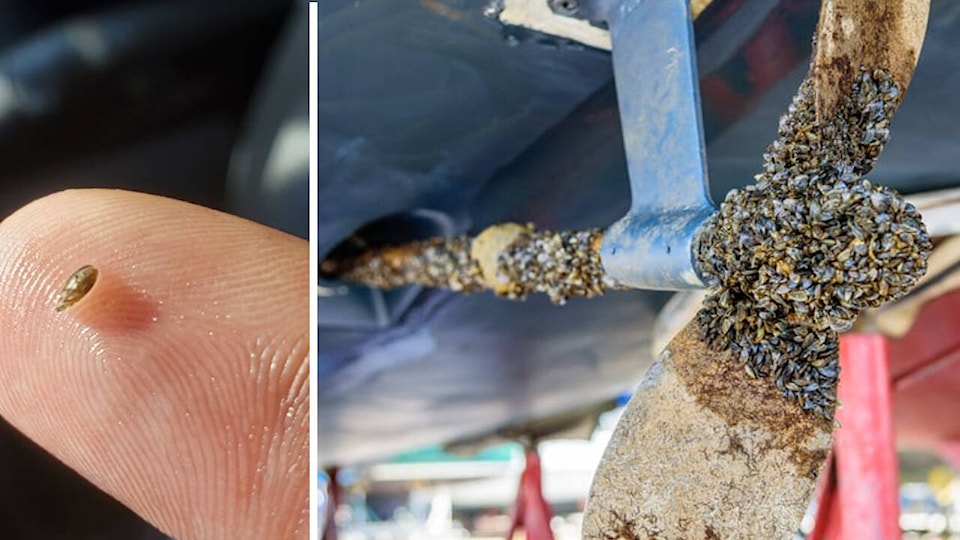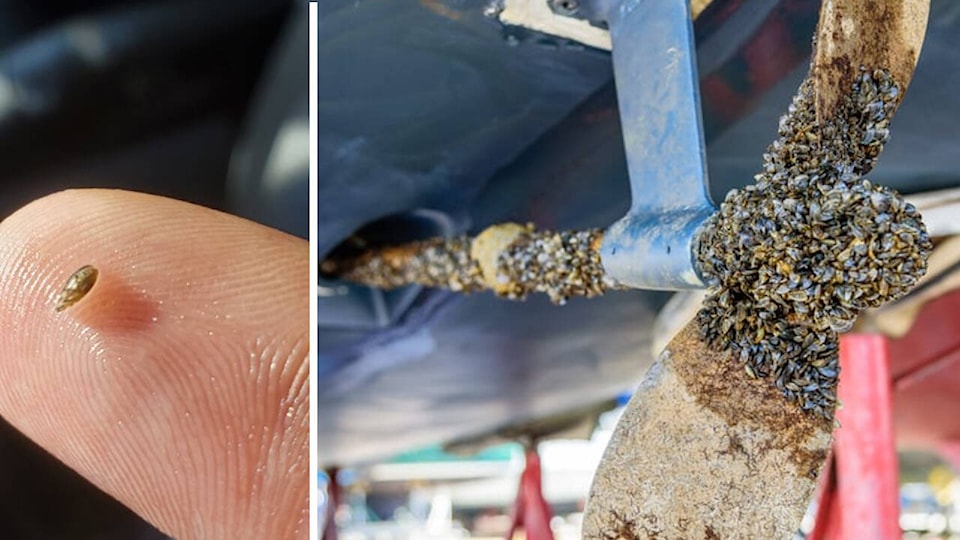There is an old axiom in political advocacy that sometimes one doth protest too much, that overly harping on the same message can begin to fade out as a priority for politicians and the bureaucrats who control them.
‘Oh, it’s those guys again’ becomes the talking point rather as opposed to the message being conveyed.
I wonder about that with the Okanagan Basin Water Board (OBWB) in recent years sounding a wake-up call to the provincial and federal governments about the potential impact of zebra and quagga mussels taking up residence in our watershed.
The OBWB has been privately advocating and publicly provoking both Victoria and Ottawa dating back to 2012 to get on board with the potential economic disaster that would occur across our region, and the province, if these mussels take root.
The water board noted in January that the creation of a Canada Water Agency in May 2023 by the federal government included a budget of $750 million to address water concerns in the Great Lake, but not for aquatic invasive species protection out west.
“Has the federal government given up on us?” questioned OBWB executive director Anna Warwick Sears. “Have they accepted defeat before we’ve even had an infestation here? That’s what it feels like.”
The numbers becoming numbing to hear over and over again, but consider the economic impact should the mussels become our uninvited ecosystem guests – $69 to $129 million in annual mitigation costs the province estimates, which does not take into account damage to local ecosystems, water filtration system repairs and real estate value losses to waterfront properties.
We don’t have to imagine what a walk on an Okanagan Lake beach would be like covered in up to two feet of sharp dead mussel shells washed up on the shore, as that reality already exists across North America.
So if people move here for the Okanagan lifestyle, which is created by a sustainable local environment, what happens if a major feature of that environment is lost? Do they stop moving here?
Since 2012, the province has dipped its toes into bulking up boat monitoring enforcement - created monitoring stations but not providing the funding or regulatory backbone to enforce every boat crossing our provincial border to be inspected 24/7 from spring through fall.
In response, the province touts its Invasive Mussel Defence Program, saying from May to December of last year it intercepted 155 watercraft on their way to B.C. waterways identified as high-risk for the mussels, with 79 being decontaminated and 36 being quarantined. Fourteen were confirmed to be invasive mussel carriers.
But since boat testing is not mandatory, and inspection stations are not manned 24/7, what is the potential for infested boats being missed, consider mussels can take hold on a boat motor rotor or water intake for up to 30 days on dryland and survive.
They are hearty travellers, having migrated from the eastern shoreline on a destructive path that has now cornered western Canada and the northwest U.S.
Take note of all this because the invasion is creeping closer than it has ever been.
In Snake River, Idaho, mussels were detected in the river in September 2023, and within two weeks the immediate response was to dump a toxic substance called chelated copper, 116,000 litres of it, into the river which spanned out over a 26-kilometre stretch of the river before its effectiveness became diluted.
While there is no guarantee the toxic treatment will kill every mussel, what is guaranteed is it killed just about everything else as a casualty, pretty much destroying an ecosystem in that stretch of river. But that was deemed a trade-off to be made in order to stop the further onset of the mussels.
The consequence of the Snake River detection is that the river confluences with the Columbia River, and from the Columbia River Basin network comes access to Osoyoos Lake, which encroaches on the Okanagan watershed.
Calcium content levels are a critical point for the sustenance of these mussels being able to survive and multiply in the hundreds of thousands in their lifecycles, barely detectable to the naked eye in their initial stage.
Lakes in the upper watershed tend to not meet that calcium criteria, but the larger valley bottom lakes, such as Okanagan Lake downstream to Osoyoos Lake will be a prime breeding ground.
So what gives? Why does the OBWB have to pound the drum on this every year to gain someone’s attention? Where are our local politicians on this? And why is the message of concern from the OBWB not being echoed by other individuals, communities or outdoor recreation groups?
Last week, James Littley, who manages the OBWB’s invasive milfoil control program and is the policy lead on the invasive mussels awareness campaign, spoke at a Zoom meeting to members and supporters of the BC Wildlife Federation (BCWF).
Jesse Zeman, a director for the BCWF, hosted the forum and reported the feedback from those listening to Littley’s presentation was a willingness to volunteer to help – to write letters, volunteer at roving monitor stations, and talk to their MLAs and MPs.
After the Idaho mussel discovery, last October the OBWB called for a two-year moratorium on out-of-province boats until the effectiveness of treatment of the Snake River situation could be better assessed, in particular the infiltration hazard posed for the Columbia River Basin.
At the time, Littley said, “We’re extremely skeptical that any type of chemical treatment could work in the Okanagan given the size of our lakes, it’s just not feasible,” a conclusion he reiterated to his BCWF Zoom audience.
Littley noted while regional emergency response planning direction on this from the province has been all but non-existent, environment ministry officials did make the trip down to Idaho to assess what was going on there.
Like the Eurasian milfoil that came from somewhere else foreign to our ecosystem, these mussels originate from the Caspian Sea in Eastern Europe.
They attached to ships coming across the Atlantic from Europe, infiltrated the eastern seaboard of North America, and have been multiplying on the march ever since across the continent.
Their impact on the Great Lakes, Lake Winnipeg in Manitoba and many water supply reservoirs have been well documented – like the Eurasian milfoil nothing so far, either organic or chemical in nature, has proven effective at controlling them once detected in a water system.
You manage the problem, you don’t get rid of it, and those mitigation efforts will cost money. Lots of money.
So as the OBWB takes on the lead advocacy role again, perhaps it is time for the rest of us to voice our concerns to our elected representatives at municipal halls, provincial legislatures and parliament to not let apathy run its course.

